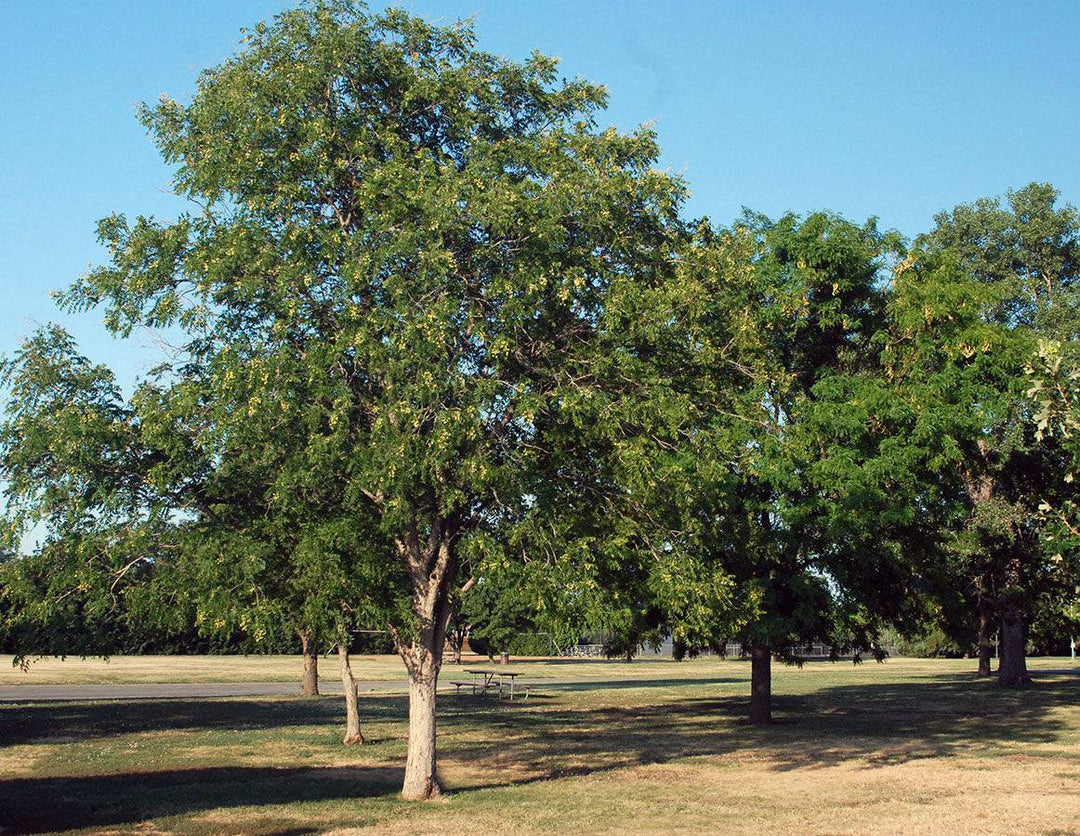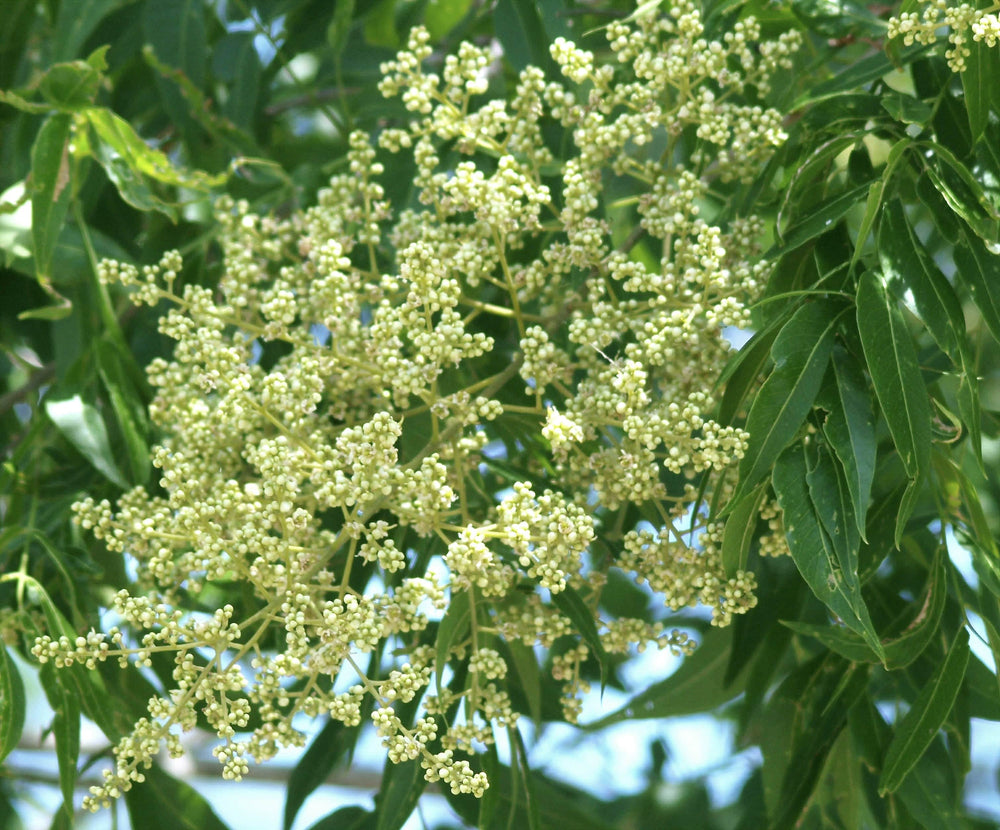Western Soapberry
- Shipping Available
- Low stock - 1 item left
- Backordered, shipping soon
Sapindus saponaria var. drummondii
Common names include Western Soapberry, Soapberry, Indian Soap Plant, Jaboncillo.
A charming and hardy medium-sized deciduous tree that reaches 20-50 feet (size depends on depth of soil where it is planted) and develops an open-rounded crown. Its leaves are glossy and a lovely medium green. In late spring, beautiful yellowish-white flowers bloom in large, open panicles that reach up to 10" long. In late summer, the flowers give way to vibrant grape-like, yellow-orange fruits. Foliage turns a stunning deep yellow in fall. The tree’s scaly trunks and sometimes lingering fruits that eventually turn black add a lovely touch of interest during winter.
The fruits are a good food source for birds but are toxic to humans. While they shouldn’t be eaten, they contain saponin, which creates a wonderful soapy lather when mashed that can be used for both skincare and laundry. They're also a food source for birds. Larval host plant to Soapberry Hairstreak butterflies.
Native to steam banks, wood margins, and rocky hillsides in Missouri to Kansas and Oklahoma south to Louisiana, Texas, New Mexico, Arizona and Mexico. Prefers rich, limestone soils. Tolerates high pH soils. Tolerant of drought, wind, heat, poor soil, air pollution and other city conditions. Needs good drainage. Not affected by disease or insects. Powdery mildew, leaf blight and leaf spot may appear in some areas in humidity.
Height: 20'-50'
Spread: 20'-50'
Bloom: May-June
Light: Full sun-Part Shade
Water: Low-Medium
Zone: 6-9
Origin: Texas and southern U.S., northern Mexico
Spring Shipping:
Orders are shipped within 7-10 business days. We will email you if there are expected delays.
When you order plants from our nursery, you can expect them to arrive in the best possible condition. Our team carefully packs each order using sturdy, biodegradable packaging materials.
Your plants' appearance may vary depending on the season and their current growth stage. We may cut back the leafy growth of some plants to prepare them for shipment and transplanting.
5 Gallon and Up: Any plant purchased to ship over 5 Gallons will be shipped bare root. This means we will remove the plant from its original pot, remove the soil surrounding the roots, and wrap the roots with a biodegradable plastic bag. This reduces weight and the likelihood of damage during shipping.
Once your plants arrive, it is essential to plant them as soon as possible. This will help them rebound and thrive. If you cannot plant immediately, water regularly and keep the roots off heat-conducting surfaces.
Newly transplanted plants often require more water until their roots are well established. Plan to water them 1-3 times weekly for the first few months.












